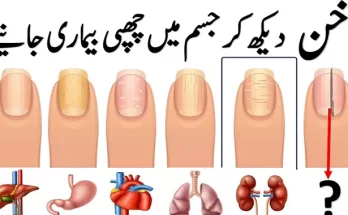
Heat stress is a serious condition when the body cannot cool itself adequately, leading to overheating. This can result in heat-related illnesses such as heat cramps, heat exhaustion, and heat stroke. Understanding how to prevent and respond to heat stress is increasingly important as global temperatures continue to rise.
Heat Stress
Heat stress happens when the body absorbs more heat than it can dissipate. Normally, the body cools itself through sweating, but high temperatures, humidity, and physical exertion can overwhelm this cooling mechanism. When this happens, the body’s core temperature can rise to dangerous levels, leading to various heat-related illnesses.
Prevention of Heat Stress
Preventing heat stress involves a combination of hydration, appropriate clothing, timing of activities, and environmental adjustments. Here are some key strategies:
1. Stay Hydrated
Water is essential for regulating body temperature. Dehydration can reduce the body’s ability to sweat and cool itself, making heat stress more likely. Here are some tips to stay hydrated:
Drink Plenty of Water: Aim to drink at least 8 glasses of water a day. During hot weather or strenuous activity, increase your intake.
Avoid Alcohol and Caffeine: Both can dehydrate the body, increasing the risk of heat stress.
Eat Water-Rich Foods: Fruits and vegetables like watermelon, cucumbers, and oranges can help maintain hydration.
2. Wear Appropriate Clothing
The right clothing can help your body stay cool by allowing sweat to evaporate more easily:
- Choose Lightweight, Loose-Fitting Clothing: These allow air to circulate your body.
- Opt for Light-Colored Clothes: Dark colors absorb more heat, while light colors reflect it.
- Use Hats and Sunglasses: A wide-brimmed hat can provide shade, and sunglasses protect your eyes from harmful UV rays.
3. Plan Activities Wisely
When possible, schedule strenuous activities during cooler parts of the day, such as early morning or late evening:
- Take Frequent Breaks: Rest in the shade or a cool place to give your body time to recover.
- Gradually Acclimate: If you’re not used to hot weather, gradually increase your exposure to avoid sudden heat stress.
4. Create a Cooler Environment
Making your surroundings cooler can significantly reduce the risk of heat stress:
- Use Fans and Air Conditioning: If available, air conditioning is the most effective way to cool down. Fans can also help, especially when combined with open windows to circulate air.
- Block Out the Sun: Use blinds or curtains to keep indoor spaces cooler.
- Seek Shade: When outdoors, stay in the shade as much as possible to avoid direct sunlight.
Recognizing Heat Stress
Even with preventative measures, it’s important to recognize the symptoms of heat stress early. The main signs include:
- Heavy Sweating: Especially if it’s excessive and combined with cold, clammy skin.
- Muscle Cramps: Often in the legs or abdomen.
- Fatigue and Weakness: Feeling unusually tired or weak.
- Dizziness or Lightheadedness: This can be a sign of dehydration and overheating.
- Nausea or Vomiting: A common reaction to severe heat exposure.
- Rapid Heartbeat: A fast, weak pulse can indicate heat exhaustion.
What to Do If Heat Stress Occurs
If you or someone else shows signs of heat stress, it’s crucial to act quickly to prevent the condition from worsening. Here’s what to do:
1. Move to a Cooler Place
Get out of the heat and into a cooler environment immediately. If indoors, turn on the air conditioning or use fans. If outdoors, find shade or go into an air-conditioned building.
2. Hydrate
Drink plenty of water, even if you don’t feel thirsty. Avoid sugary, caffeinated, or alcoholic beverages, as these can worsen dehydration. Sports drinks can also be helpful as they replace lost electrolytes.
3. Rest
Lie down and rest in a cool place. Elevate your legs to promote blood circulation and reduce strain on your heart.
4. Cool Down
There are several methods to cool the body quickly:
- Use Cool Compresses: Apply a cool, damp cloth to your forehead, neck, and wrists.
- Take a Cool Shower or Bath: This can help lower your core body temperature rapidly.
- Use a Fan: If a fan is available, use it to increase airflow and evaporation of sweat.
5. Monitor Symptoms
Keep a close eye on symptoms. If they worsen or don’t improve within 30 minutes, seek medical help immediately. Heat stroke is a medical emergency and requires prompt treatment.
6. Avoid Further Heat Exposure
Once symptoms improve, avoid further heat exposure for the rest of the day. Allow your body time to fully recover.
Heat stress is a preventable and treatable condition, but it requires awareness and proactive measures. By staying hydrated, wearing appropriate clothing, planning activities wisely, and creating a cooler environment, you can significantly reduce your risk. Recognizing the early signs of heat stress and responding quickly can prevent more serious heat-related illnesses. As temperatures rise, these steps are essential for staying safe and healthy in the heat






